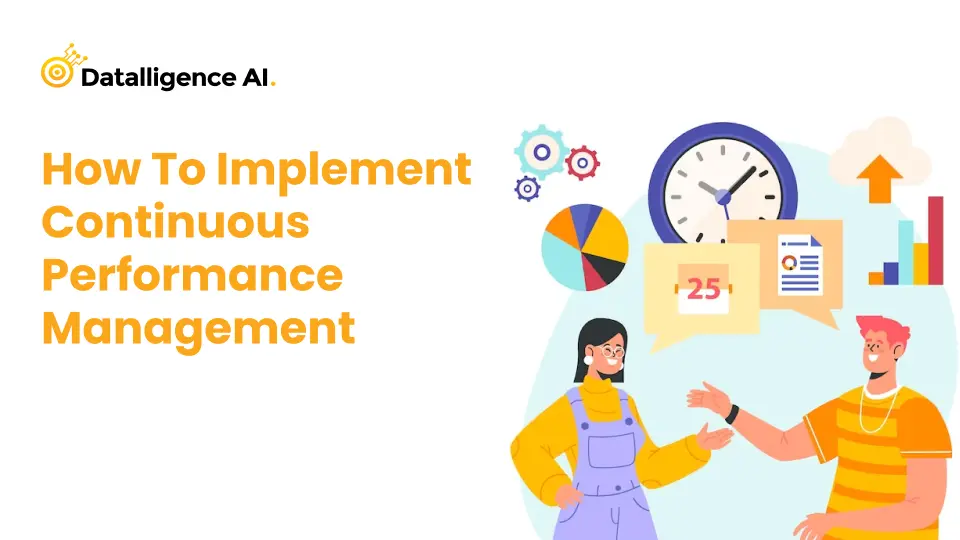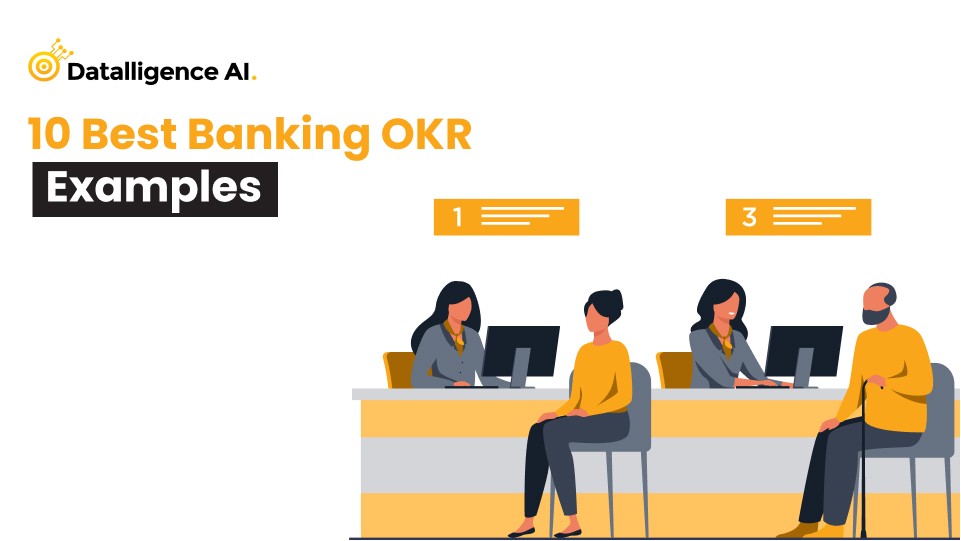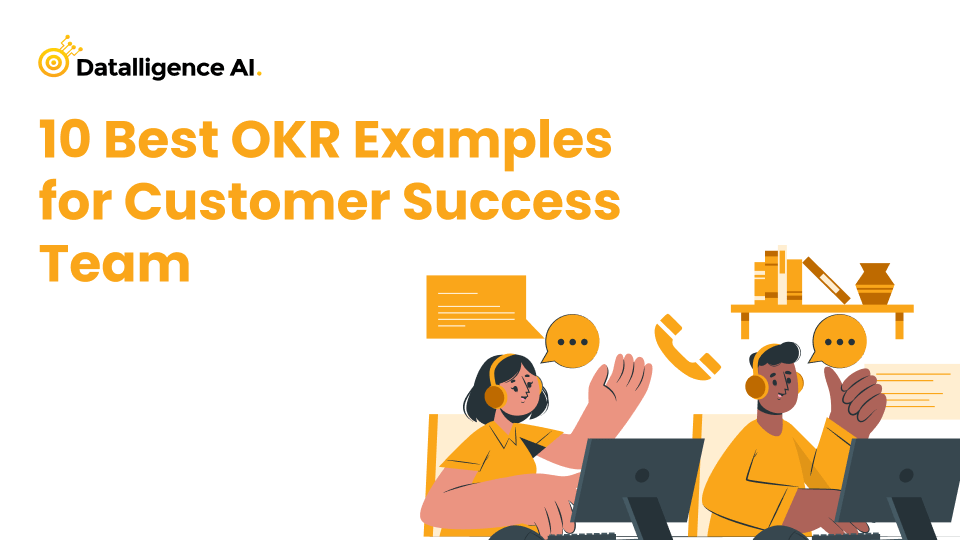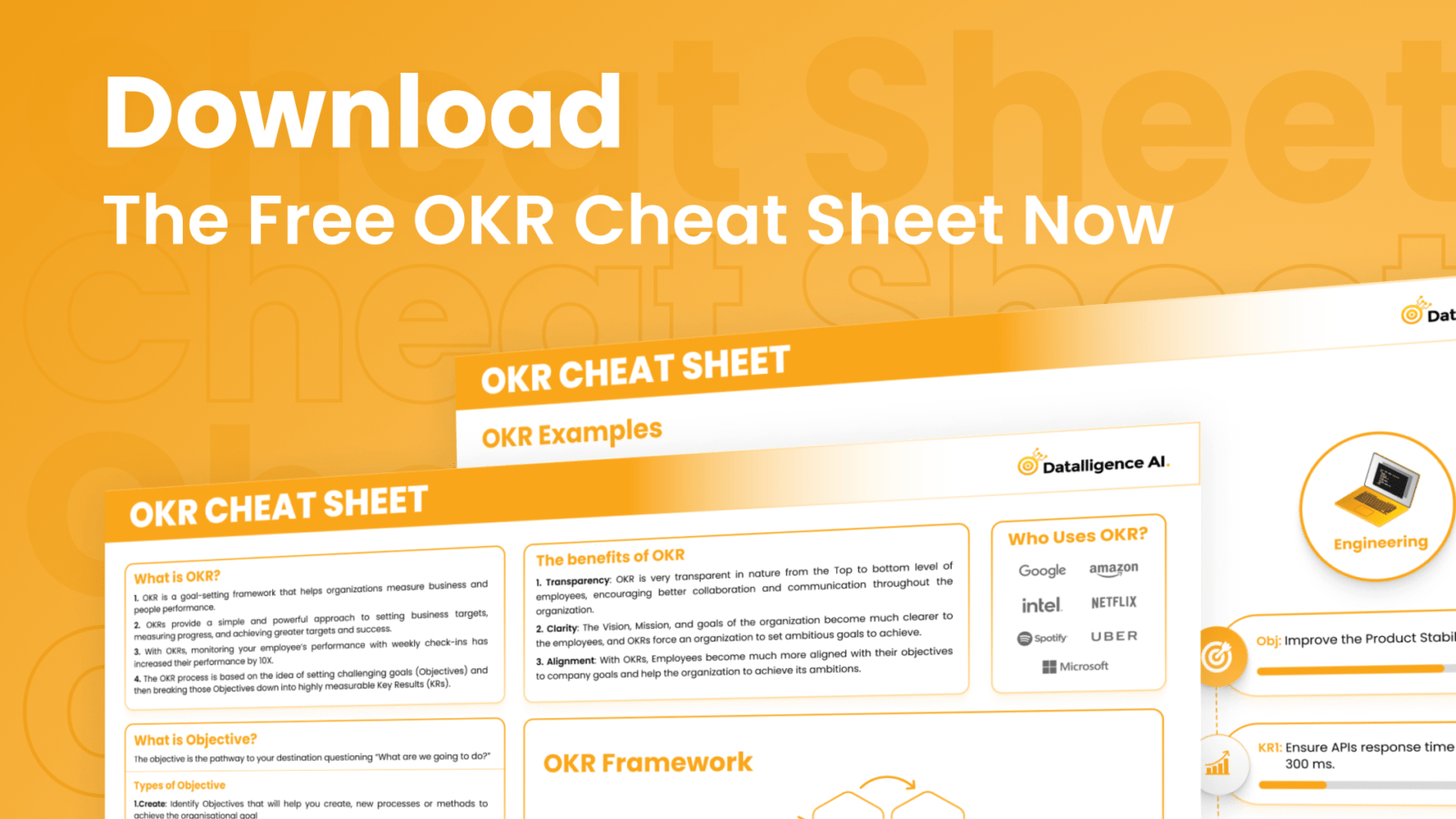In today’s fast-paced work environments, traditional annual reviews no longer cut it. Companies now prioritize real-time feedback and agility. Implementing a continuous performance management process ensures consistent goal alignment, timely coaching, and ongoing development. In this guide, we’ll walk you through the step-by-step approach to set it up effectively and drive high performance across teams.
How to implement a continuous performance management ?
Performance Management is a collective communication process through which managers and employees align together to plan, monitor, and review an employee’s work objectives and their contribution towards the long-term goals of the organization.
Additionally let’s understand more about Continuous Performance Management, its significance, benefits, and the steps involved in implementing continuous performance management.
Difference between continuous performance management vs performance management
In recent times, most Agile businesses around the world turn towards continuous performance systems to overcome the inherited flaws of the traditional performance management methods. Continuous performance management is a comprehensive approach when compared to the annual appraisal. The manager and the employee get the opportunity to give and take real-time feedback often, especially to build a healthy relationship with periodic one-to-ones, and set near-term objectives and goals.
What Is continuous Performance Management?
Continuous Performance management is an ongoing process, that happens throughout the year, by planning objectives, reviewing progress, and providing coaching and feedback to fulfill the employee’s career goals and objectives. Managers support employees with continuous feedback, devise training programs and tools that pitch in for self-development.
Why is continuous performance management important?
Continuous Performance management is well-chosen by most organizations, who look for an alternate method for the annual appraisals. In recent times, leaders realize the importance of the manager’s role in providing continuous feedback that acts as a foundation for modern business success. And because of the below importance, most of the companies turn towards continuous performance management methods.
#1. Effective goal setting.
Employees set their individual goals and align them with organizational goals through regular conversations and discussions with managers. They establish these goals using OKRs (Objectives and Key Results) or SMART goals, enabling them to track their progress independently.
#2. Encourages communication between Manager and subordinates
When Managers and employees get the chance to give and take consistent feedback, the relationship and the trust between both levels strengthens and they drive towards the organization’s goal effectively. On the other hand, they figure out the area of improvement, and training is provided to enhance the skills.
#3. Healthy work environment
The continuous Performance Management system provides a healthy platform for managers and employees to collaborate, converse and discuss their objectives and goals. A regular feedback system helps them to identify where they stand and what they have to improve to accomplish their goals.
#4. Improves Employee Productivity
Employee productivity tends to increase where is transparent feedback, healthy relationship and get independence in setting their goals. A Continuous performance management system gives the platform for the employees to have healthy competition within departments. When their performance is rewarded and recognized, employees’ work-life is happier which in turn increases their retention.
#5. Saves time and money
Companies spend huge money and time in retaining and hiring employees. Continuous performance management reduces attrition rate and employees are more loyal when their performance is recognized and rewarded through periodic assessments.
Continuous performance management has diverse benefits when compared to conventional performance management methods.
Types of process
A continuous Performance management system can be effectively followed by the following key features,
- Check-Ins – Continuous feedback improves the trust and relationship between the employees and team leaders. Managers initiate the discussions to keep the employee’s performance on the track.
- Priorities – Employees get the liberty to set their objectives and key results in focus with the organization’s goals.
- Performance Dashboard – To access the performance and recognize the outcomes in a single dashboard where the comprehensive view of Check-ins, goals, feedback, and an annual summary is exhibited.
- 360-degree feedback – Employees learn and grow with continuous feedback from their network of Managers, trainers, mentors, and colleagues to improve their performance.
- Summary reports – Managers can use the any-time summary reports to guide the employees with fruitful discussions periodically.
How to implement continuous performance management
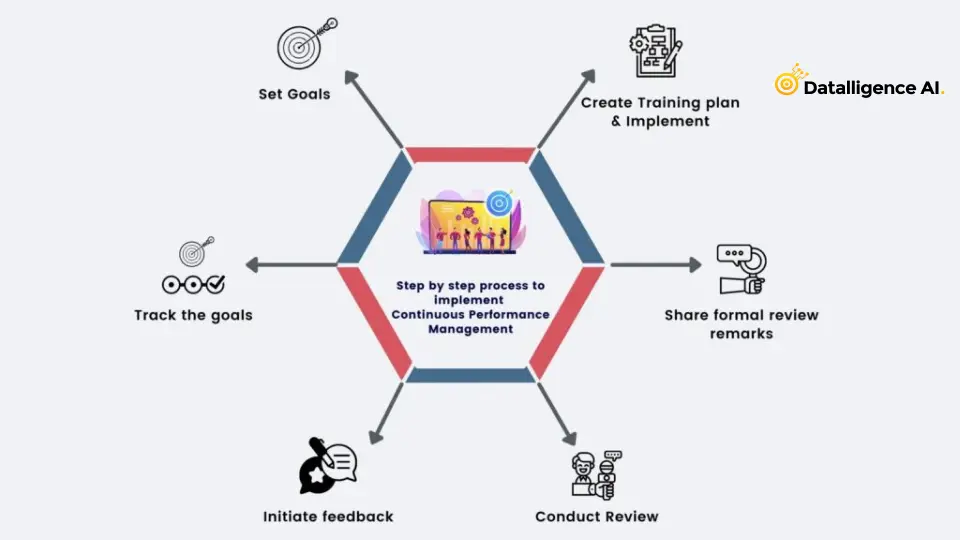
This is also a modern strategy that benefits both management and employees by fostering ongoing feedback, goal-setting, and development. Unlike traditional annual appraisals, this approach ensures real-time performance tracking and continuous growth.
To successfully implement Continuous Performance Management, top management must establish clear, attainable, and actionable goals that drive performance and strengthen internal relationships. Also, Providing real-time feedback, conducting periodic check-ins, and setting short-term objectives enhance employee morale and engagement. This dynamic approach creates a culture of continuous improvement and adaptability, making it a more effective alternative to outdated annual review methods.
A critical step in implementation is helping management understand the need for this transition. Managers should be actively involved in discussions about key aspects, such as
-
Structuring and determining the frequency of performance meetings
-
Aligning performance goals with business objectives
-
Delivering constructive and timely feedback
-
Organizing training and development programs
-
Establishing fair and transparent evaluation criteria
-
Scheduling performance reviews for ongoing progress tracking
By embedding these principles into everyday operations, organizations can create a more agile and responsive performance management system.
This enables employees to stay aligned with company goals, fosters open communication, and ensures that performance discussions are not limited to once-a-year evaluations. With a well-structured process, companies can boost productivity, improve employee satisfaction, and drive long-term success.
1. Facilitate Training
To get the best out of Continuous Performance management, appropriate training is essential to the managers with all the documents in place. Management should spend time training managers to conduct an effective conversation and provide feedback from their reporters.
2. Update the employees about the changes
Communicating the benefits of the new system and its benefits, ease them to understand the need for it. This can be done continuously with elaborate and clear presentations and explaining them in person. Employees are encouraged to ask their queries to managers to understand the process better
3. Start monitoring the performance
In the initial phase of the performance cycle, managers observe the employee’s behavior and monitor their performance pertaining to the new guidelines. This ensures how employees adapt to the new system and get knowledge about the performance metrics by which they are going to be analyzed. It can be done by,
- Noting down the behavior changes
- Getting feedback from colleagues and mentors
- Collecting self-assessment forms
- Rating their performance as per company standards
4. Begin with Official appraisal initially
After observing the behavior and performance of the employees in the new system, an official meeting can be organized to discuss the following aspects:
- Access how employee’s behavior is in line with the Job description
- Employees’ performance and behavior are evaluated against the company’s policies and procedures.
- Employees get the opportunity to discuss their performance and get their manager’s feedback
- Setting actionable goals where both employees and managers involved in the discussion
- On the other way, employees also provide feedback about their manager’s performance
Finally, the upcoming meeting schedule and agenda are revealed to the employees.
5. Providing necessary training and development
Managers have to take responsibility to organise appropriate training and development programs to help the employees to meet their objectives effectively. Employees can also share their training requirements with the managers to make them accountable for their performance in reaching the goals.
6. Casual meeting
Informal meetings are conducted in between the formal ones to develop a healthy relationship and understanding between the manager and subordinate. They happen in a casual manner without strict agendas and employees are encouraged to describe their concerns.
7. Collecting feedback
In order to analyze how managers and employees are getting adapted to the new system, periodic feedbacks are collected in the form of surveys, forms, formal and informal meetings. This helps to enhance the system and make them comfortable in following the same without hindrance.
8. Constantly communicating and implementing the changes
Management and HR should assess the suggestions received from employees and managers regarding the changes in the system and try to implement them to maintain the organization’s culture. This encourages the people to come up with their ideas and management should communicate the changes made in business strategy and policies.
9. Repeating the performance cycle
After the completion of the first performance cycle, managers must coordinate with HRs to continue the process without any struggle and ensure the smooth implementation of the process. Employees can also keep in touch with HR to assure their manager’s support for the successful performance management cycle.
Conclusion
Datalligence Performance Management Module uses the OKR based performance management to help organizations to get data-driven decision making. The platform eliminates bias and integrates with continuous feedback and recognition. Talk to our experts and create a performance culture starting today

